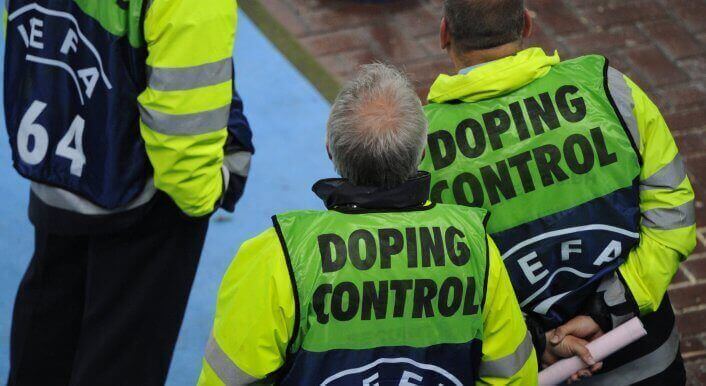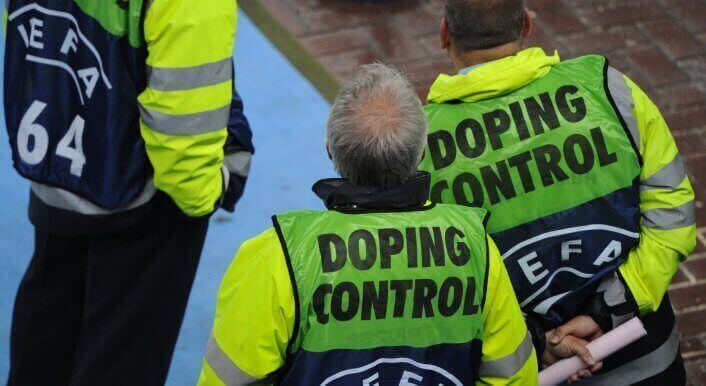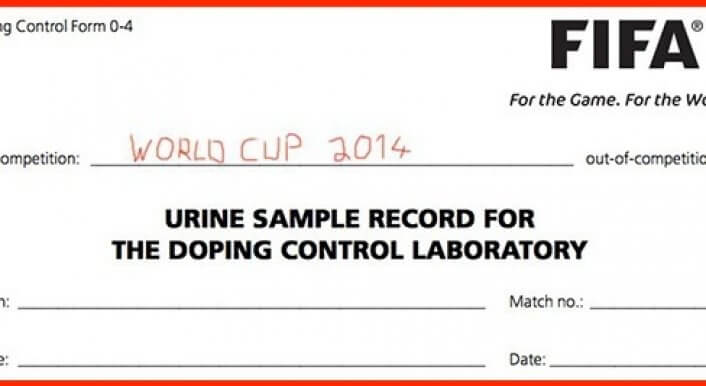Doping controls at the World Cup: Rather PR than serious testing
FIFA had a keen plan: Every player at the World Cup was supposed to be tested at least once before the start of the tournament. Well, it didn’t happen. The rather large number of 62 players (that’s almost three complete squads) were not tested before the World Cup. No problem for FIFA, they just tested those players during the tournament. Another issue is the travel time of doping tests. That was much longer than expected and a positive test could have led to severe consequences. Taken all this into account, we had pretty good reasons to look for some weak spots.

For FIFA, it was all a massive success: 91,5 per cent of the targeted amount of doping tests were carried out. However, 62 players were not tested before the tournament. Before the World Cup, we made a public call to keep a close eye on the doping controls. If you look at the result you easily see that many players were simply not available for the initial controls.
One case makes it pretty clear how easy a player could trick the FIFA control system. On May 27, FIFA testers arrived at the training camp of Argentina. Every player except Ezequiel Lavezzi was there. PSG striker Lavezzi had left the camp citing personal reasons shortly before the doping inspectors arrived. Julio Grondona, president of Argentina’s football federation, personally signed Lavezzi’s excuse. It had nothing to do with doping, Grondona claimed.
As most of the pre-tournament tests were carried out in May, most players of Champions League finalists Real Madrid and Atletico Madrid missed those tests. We asked FIFA about that and received this answer: „In accordance with FIFA anti-doping regulations, the remaining players can and will be tested at any time during the competition“.
On July 7, FIFA announced at a press conference that they have tested those 62 players in the meantime. However, we can’t really prove if that’s true. The only sure thing is that five players of Costa Rica were tested additionally to the two players normally tested after the match against Italy.
Those additional tests were communicated by FIFA. However, the fact is that those tests can hardly be described as an out-of-competition control. They were foreseeable and completely without the element of surprise.
We confronted 23 national teams where players haven’t been tested before the World Cup concerning to our list. We simply asked if we were right, which players were concerned and if those were tested later. We received only one answer. Here’s what Australia officials wrote: „All members of our 30 man provisional squad were tested before we departed Australia and we have had regular testing after every match. Outside that it’s not appropriate to discuss individuals.“
By the way, all 674 blood and urin samples taken before the World Cup came back negative. Also all in-competition controls until the semifinals were negative. Those tests were flewn from Brasil to Lausanne. As logistics turned out to be rahter complicated, FIFA was quite lucky no positive test came up. Because if there was an analysis before the next match would have been almost impossible. We wrote about this issue quite detailed a couple of weeks ago.
FIFA medics Jiri Dvorak and Michael D’Hooghe gave some insight on the transport issue on July 7. It took averagely 37 hours for every test from venue to laboratory (Wire copy in German). That is quite some time above our estimation of 24 hours. And even with a travel time of one full day it would not have been possible to have a final analysis before the next match for the concerned player/team.
In the end it was another World Cup without doping for FIFA. Since 1994 there hasn’t been a positive test during a tournament. However, more people become suspicious about doping in football. One of them is Germany’s Home Secretary Thomas de Maizière: „It stands out that there are no positive tests, despite the heat, despite the exciting style of football. But probability as well as analogy to other big sporting events speaks to the contrary.“



